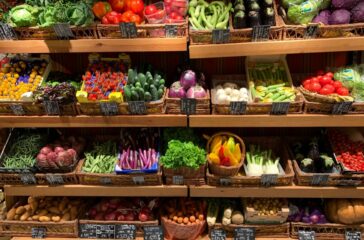Healthy or high risk? New analysis warns of pesticide residues on some fruits and veggies
By Carey Gillam
Several types of fruits and vegetables generally considered to be healthy can contain levels of pesticide residues potentially unsafe for consumption, according to an analysis conducted by Consumer Reports (CR) released on Thursday.
The report, which is based on seven years of data gathered by the US Department of Agriculture (USDA) as part of its annual pesticide residue reporting program, concluded that 20% of 59 different fruit and vegetable categories included in the analysis carried residue levels that posed “significant risks” to consumers of those foods.
Those high-risk foods included bell peppers, blueberries, green beans, potatoes and strawberries, according to CR. The group found that some green beans even had residues of an insecticide called acephate, which has been banned for use on green beans by US regulators since 2011. In one sample from 2022, levels of methamidophos (a breakdown product of acephate), were more
than 100 times the level CR scientists consider safe. In another sample, acephate levels were 7 times higher than CR considers safe.
Overall, out of the nearly 30,000 total fruit and vegetable samples for which CR examined data, about 8% percent were deemed to have residues at “high risk or very high risk”. Imported produce was more likely to carry high levels of pesticide residues than domestically supplied foods, the report said, noting that residue levels can vary widely from sample to sample.
The results “raise red flags,” according to CR. The report advises that children and pregnant women should consume less than a serving a day of high-risk fruits and vegetables, and less than half a serving per day of “very high-risk ones.”
“People need to be concerned because we see that the more data we gather on pesticides, the more we realize the levels that we previously thought to be safe turn out not to be,” said Michael Hansen, a senior scientist at CR who was recently appointed to a USDA food safety advisory committee.
The organization said the “good news” is that the data showed residues in most of the foods sampled, including 16 of 25 fruit categories and 21 of 34 vegetable types, presented “little to worry about.” Nearly all organic samples showed no concerning levels of pesticide residues.
The report suggests consumers “try snap peas instead of green beans, cantaloupe in place of watermelon, cabbage or dark green lettuces for kale, and the occasional sweet potato instead of a white one.”
 EWG
EWG